In the early morning, I awoke to a stunning vista of Cha-am beach set against azure skies. It was a bright day to unwind and soak in the splendour of nature by taking a deep breath of fresh air, perfect for my first hiking trip after working from home for two years. This was like a challenge to put my physical abilities to the test.
Just a 10-minute drive from my resort, Khao Nang Phanthurat Forest Park is a magical entryway into the realm of Thai folktale Sang Thong, with its bedazzling 2.5km trail going through the heart of the limestone hill, home to diverse indigenous plants and wildlife.
Back in 1996, the late King Bhumibol Adulyadej boarded a helicopter to fly to Klai Kangwon Palace and noticed that some parts of Khao Phanthurat were crumbling. He had authorities afforest the 1,562 rai land before it was designated as a national heritage site in 1999 so that future generations can come to learn about natural resources and the history of Thai literature.
This limestone mountain appears to be a natural sculpture of a giant lying on her back and stretching from north to south, thanks to the imagination. Legend has it that giantess Nang Phanthurat disguised herself as a human and adopted Phra Sang as her son.
When he visited Nang Phanthurat's secret chamber and discovered a mountain of animals and human bones, he realised his mother was a monster. He was terrified, so he dipped himself in a gold well and disguised himself as a negrito to hide his gold-coated body before fleeing with a magical cane and glass shoes.

Larn Kueak Kaow.

The Khao Nang Phanthurat Forest Park is named after the well-known Thai novel Phra Sang.
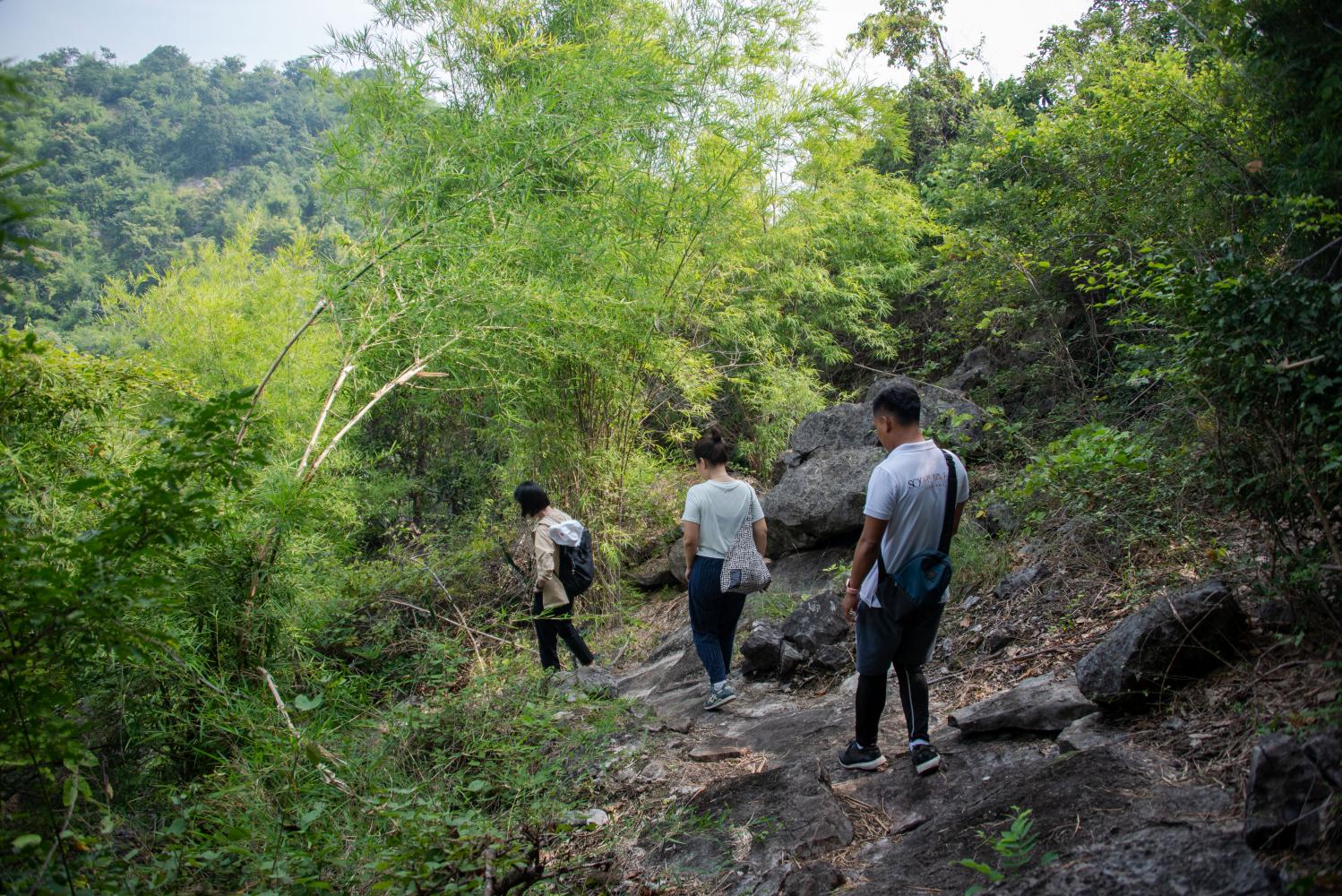
The Khao Nang Phanthurat Forest Park has a 2.5km hiking route that runs through the heart of the limestone hill.
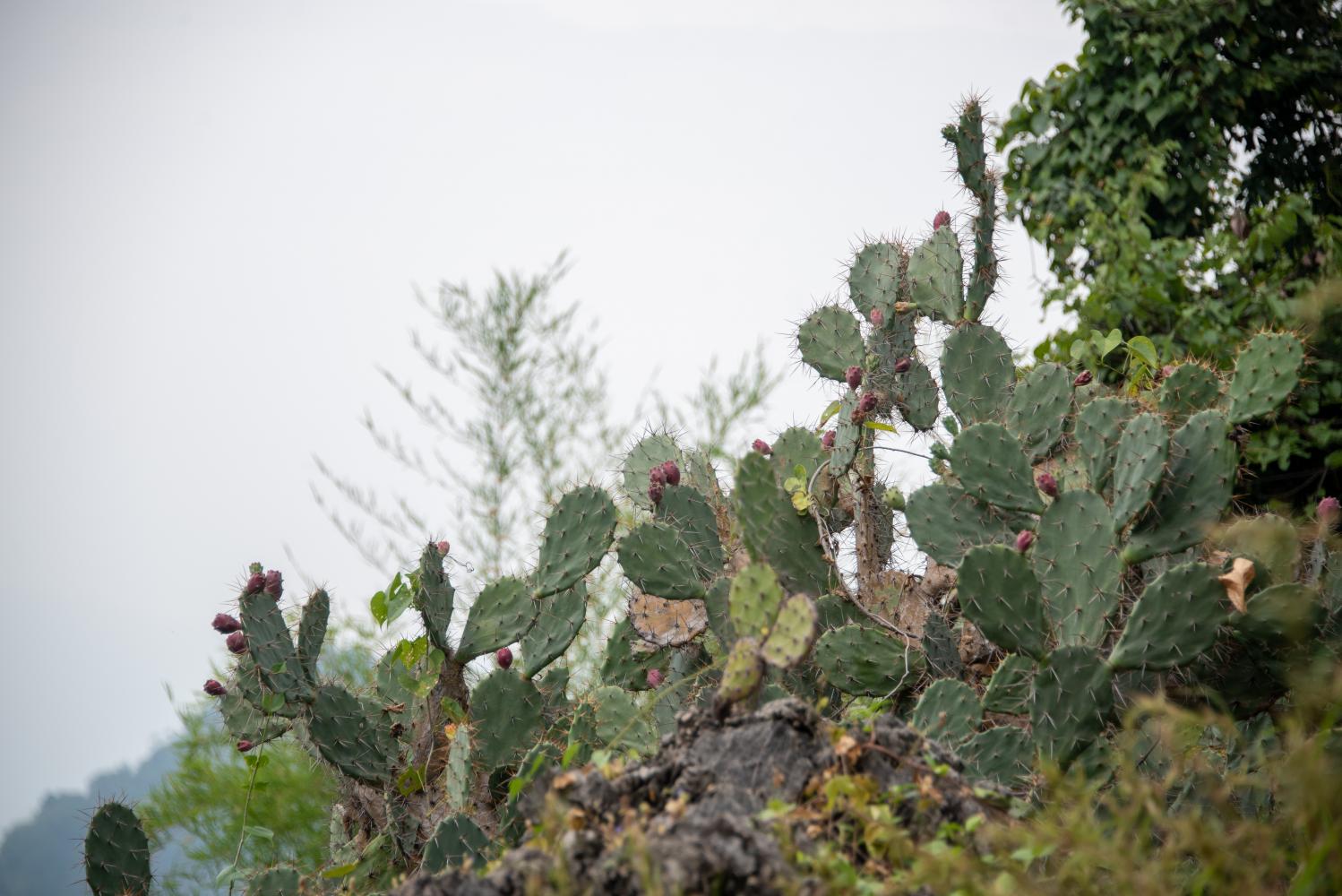
Phra Sang refused to return home, despite Nang Phanthurat's plea. She died of unresolved anguish and Phra Sang cremated her here, which is why this mountain is known as Khao Phanthurat.
Along the hiking trail, there are several scenic attractions that reflect the moments from the tragedy and educate visitors about the history and ecology. Furthermore, this park has long been a popular bird-watching spot, with more than 100 different bird species including little green bee-eater, black-winged stilt, ashy wood swallow and paddy field pipit.
Visitors are greeted by a big family of domesticated monkeys, who accompany them up to Nang Phanthurat's shrine and crematory through a 300m stairway setting against a lush backdrop.
This rocky land is embraced by native plants like Malayan spurge, cochineal nopal cactus, dracaena, and santisukia, all of which are succulent, prickly, scrubby, and have their root systems bonded to the rocks, making them drought tolerant.
Here, I visualised myself in a scene that Nang Phanthurat wept over until she died when her son Phra Sang refused to descend the hill and return home. Phra Sang held a funeral for his mother to express his affection.

A bamboo grove is a popular scenic point for tourists.
Looking back to her life, I climbed up and walked through the towering 4m hole in the rock, which is considered to be Nang Phanthurat's mystical mirror. According to legend, before meeting her son, a giantess pretended to be human and checked herself in the mirror to see if she still looked like a giant or if she still had blood on her after foraging for wild animals.
Leaving her dressing room, a sinuous rocky path on the other side leads visitors deeper into a mythical woodland, where I discovered the holy pond, where Phra Sang drowned himself in gold to masquerade as a negrito, who can fly and summon fish and animals.
After that, I sensed that the journey was becoming challenging, despite the fact that it was barely 300m away from the gold well. My muscles and heart were put to the test as the terrain got steeper and rougher.
I arrived at Larn Kueak Kaow, a shady courtyard that looks like a woman's crystal shoe. Spread over three rai, it is blanketed with native plants such as ebony and hoptree. Its shape recalls a moment in which Phra Sang flew away after stealing magical things from Nang Phanthurat's chamber.
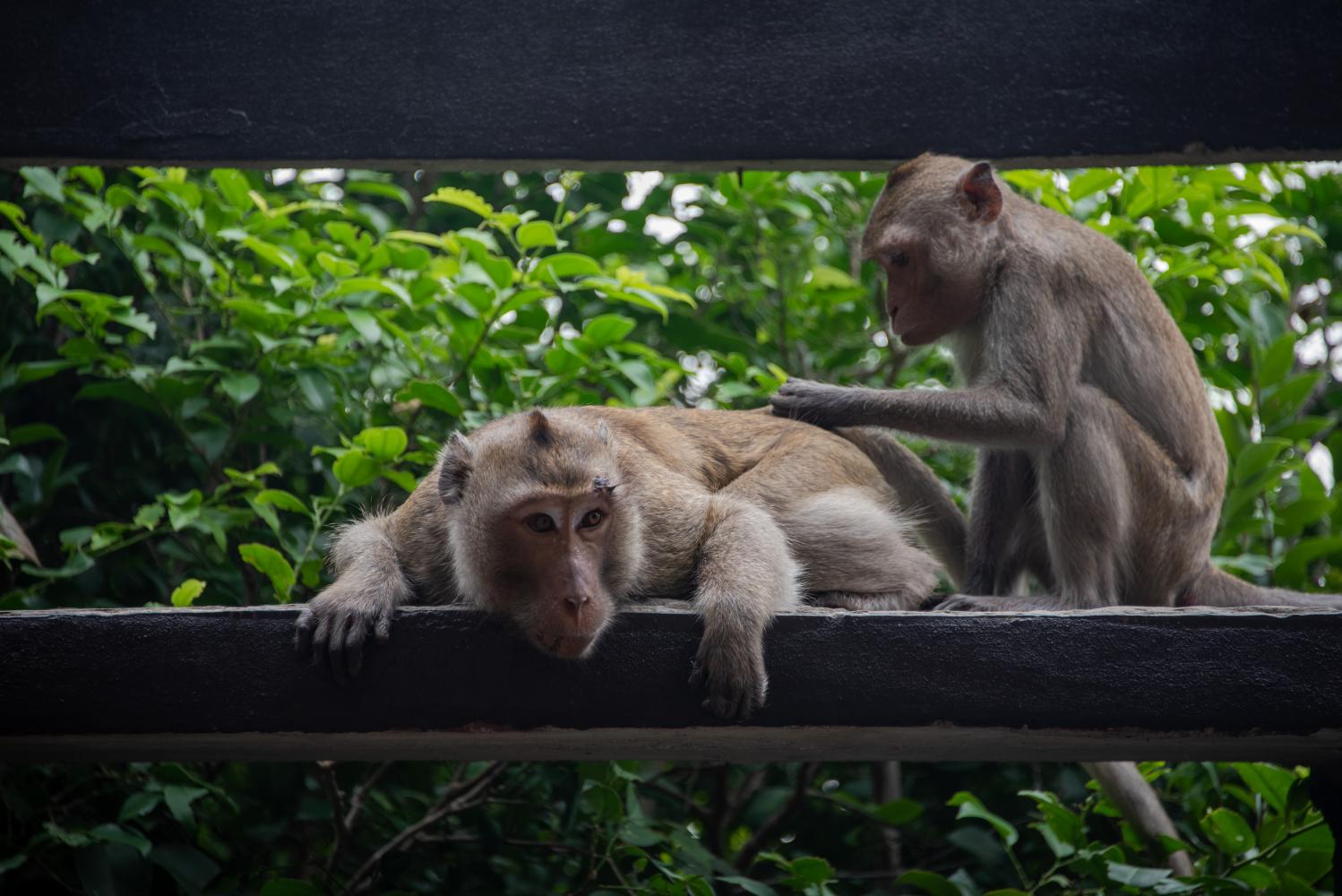
Visitors at the viewpoint will be accompanied by a family of monkeys.
A bit further, a dense bamboo grove created a picturesque backdrop for tourists to take a break and snap selfies. With its stunning landscape, I took a few minutes to imagine how beautiful it would be when all the bamboo leaves turned yellow and cover the rocky path this winter.
I was sweating profusely as I scrambled up and down the steep rocky maze to the vantage point, burning away my energy. It's a nice place to sit and enjoy the fresh air while taking in the stunning 180-degree view of the lush landscapes, which was formerly an elephant gathering point. Based on folklore, visitors can envision Nang Phanthurat wandering around with a stick in her hand to hunt wild animals for meals.
Descending down to earth, I explored the Thung Setthi Historical Site, just 900m from Khao Nang Phanthurat. It's home to ruins of a large brick stupa, which was erected during the Dvaravati period (the 11th to 16th centuries) at the foot of Khao Chom Prasat.
There are two stairways on the East and West sides. While its pinnacle crumbled, other unearthed artefacts such as Buddha statues, architectural stucco components, sculptures of foreigners and animals are currently housed in the Fine Arts Department. This land used to be a maritime trading port and a transit point for merchants from China, India and Persia.
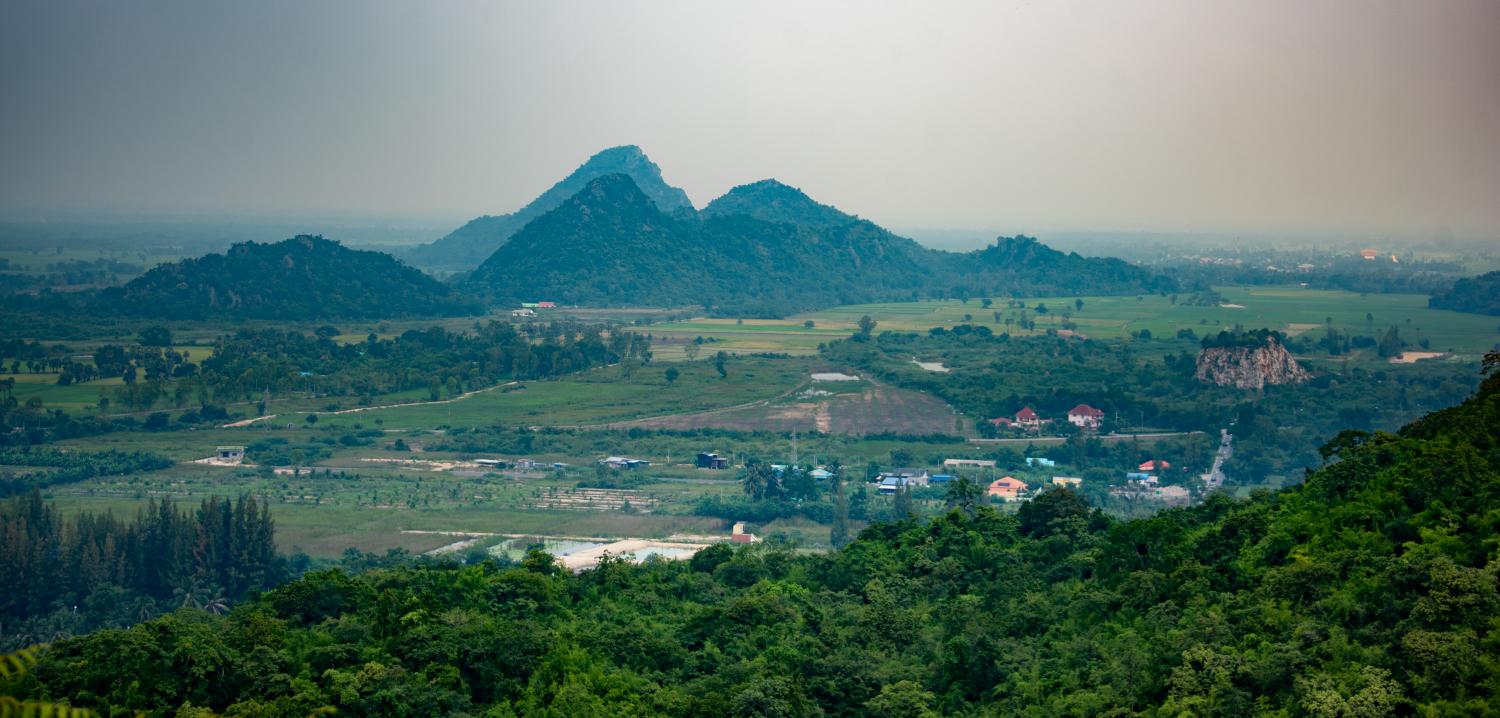
The beautiful view of lush landscapes around the forest park.
According to legend, a wealthy man was hauling a pile of gold when his bullock wagon broke down several times while passing through this neighbourhood. He enlisted the aid of local folks to repair a vehicle, but his efforts were in vain. Finally, he realised that it was a ruse to steal his gold, so he constructed this pagoda to keep them.
After working out a sweat, I headed to the Uncle Thanom palm plantation, which is located in Ban Lat district, to recharge my spirit with refreshing drinks and sweets made from toddy palm sugar.
Back in 1992, former sub-district chief Thanom Phungoen planted 450 toddy palms on his 10-rai land to alleviate flooding and promote organic farming in the neighbourhood. It is now in the hands of his son Amnat, who has turned their orchard into a learning centre for those interested in environmentally responsible tourism and local wisdom.
"Palmyra trees thrive in direct sunshine, making them simple to maintain. There's no need to use chemical fertiliser. They will yield fruit when they're 15 years old. The older they become, the more product they generate. All of their components are beneficial. Toddy palm fruit has been used in curries and desserts, while palm flesh from palm seeds has been utilised to feed sprouts as a natural fertiliser. Charcoal, herbal drinks and medicine are made from palm shells," Amnat said.
With a row of towering palmyra trees spanning as far as the eye can see, this site appears to be pleasant and soothing when visitors are allowed to rest in a hammock or picnic in the lush courtyard. Amnat hosts classes on how to grow and harvest toddy palms, as well as how to use their fruits to make organic goods. Those who don't have time to join a class can sample fresh toddy palm juice, freshly baked kanom tan (yellow toddy palm cake) and palm sugar, ranging in prices from 50 baht to 80 baht.

Amnat Phungeon has converted his toddy palm farm into an organic agricultural learning centre.

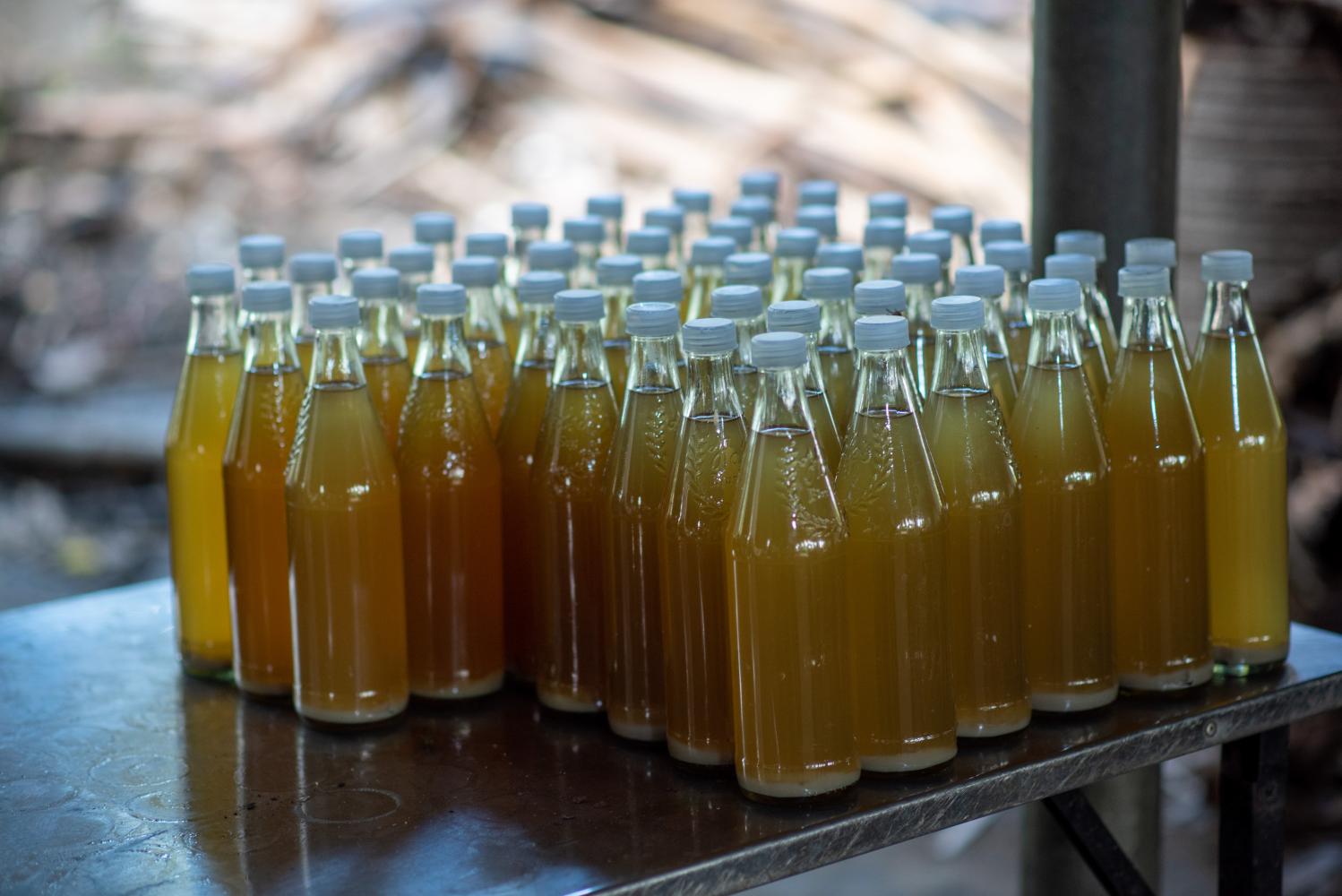
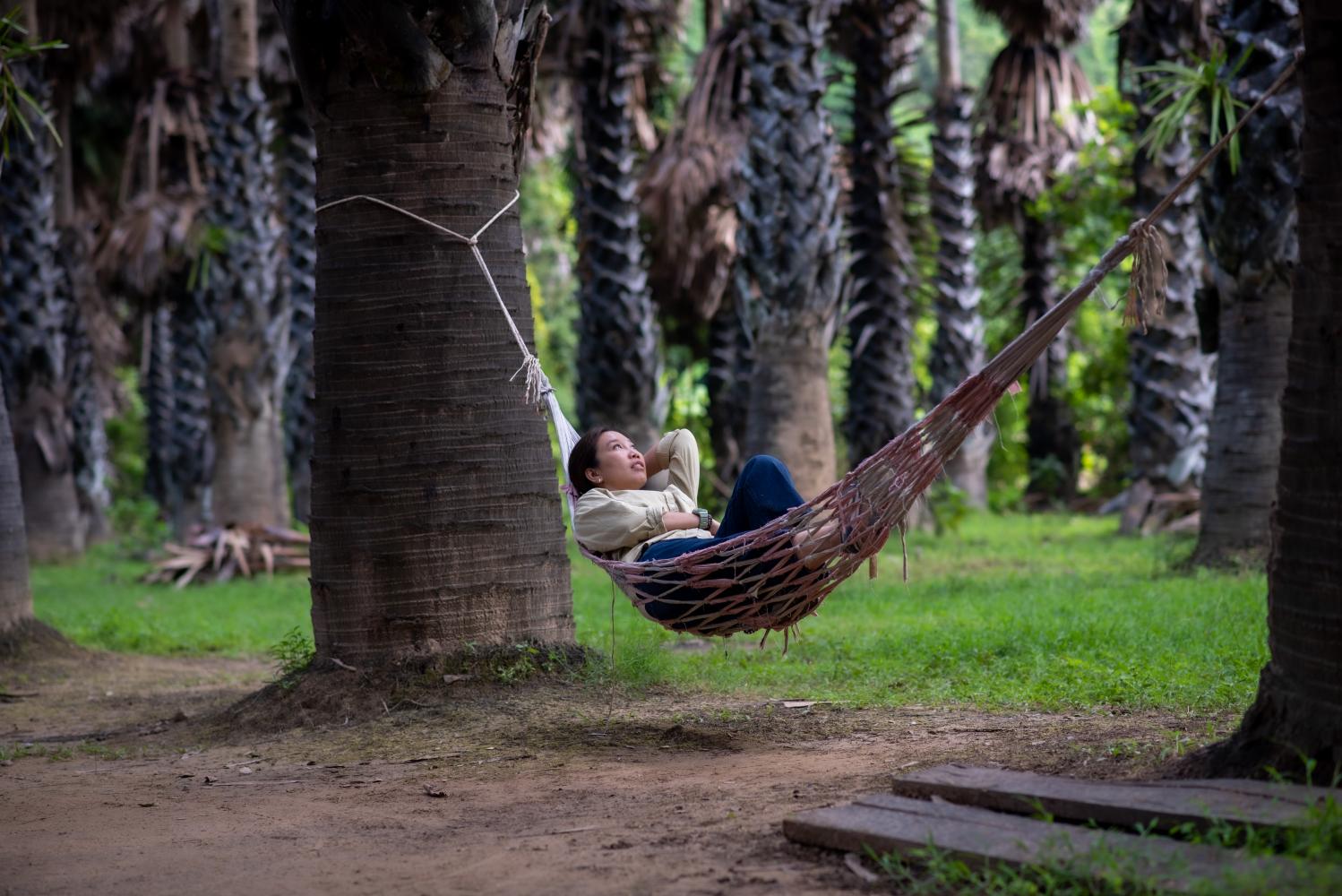
"They have a lifespan of up to 200 years. Toddy palm sugar is odorous, sweet, and delicate, making it great for healing skin. The soil of Phetchaburi is rich in minerals, so palmyra fruits have a pleasant flavour. The longer they are cooked, the sweeter they get," Amnat said.
I ended the day at Wat Kamphaeng Laeng, which is located in Muang Phetchaburi district. Constructed with laterite, the ruined Khmer-style temple compound transports visitors back to the 13th century when King Jayavarman VI stretched his dominance into Siam.
Behind the boundary walls, this historic complex is home to five ancient religious buildings, all of which were registered as a national monument in 2004 by the Fine Arts Department. It is believed that this temple was in operation until the late Ayutthaya period before being abandoned and restored as a Buddhist temple in the present day.
During the archaeological excavation, the team unearthed ancient artefacts such as radiating Avalokitesvara, four-armed Avalokitesvara, Vajrasattva beneath Naga shelter, Prajnaparamita and a bridge balustrade with Garuda catching Naga. Currently, four ancient buildings are enshrined with sacred statues of Luang Pho Phet and Luang Pho Nil crafted from various materials and designs.
- Khao Nang Phanthurat Forest Park is located in Cha-am district, Phetchaburi. It's open daily from 8.30am to 5pm. For more details, call (095)-761-0906.
- Uncle Thanom's toddy palm plantation is in Ban Lat district, Phetchaburi. It's open daily from 8.30am to 5pm. For more details, call (087)-800 -7716 or visit the Suan Tan Lung Thanom (in Thai) page on Facebook.
- Wat Kamphaeng Laeng is situated on Phra Song Road, Muang Phetchaburi district. It's open daily from 8am to 5pm.

The viewpoint overlooks Khok Chang.
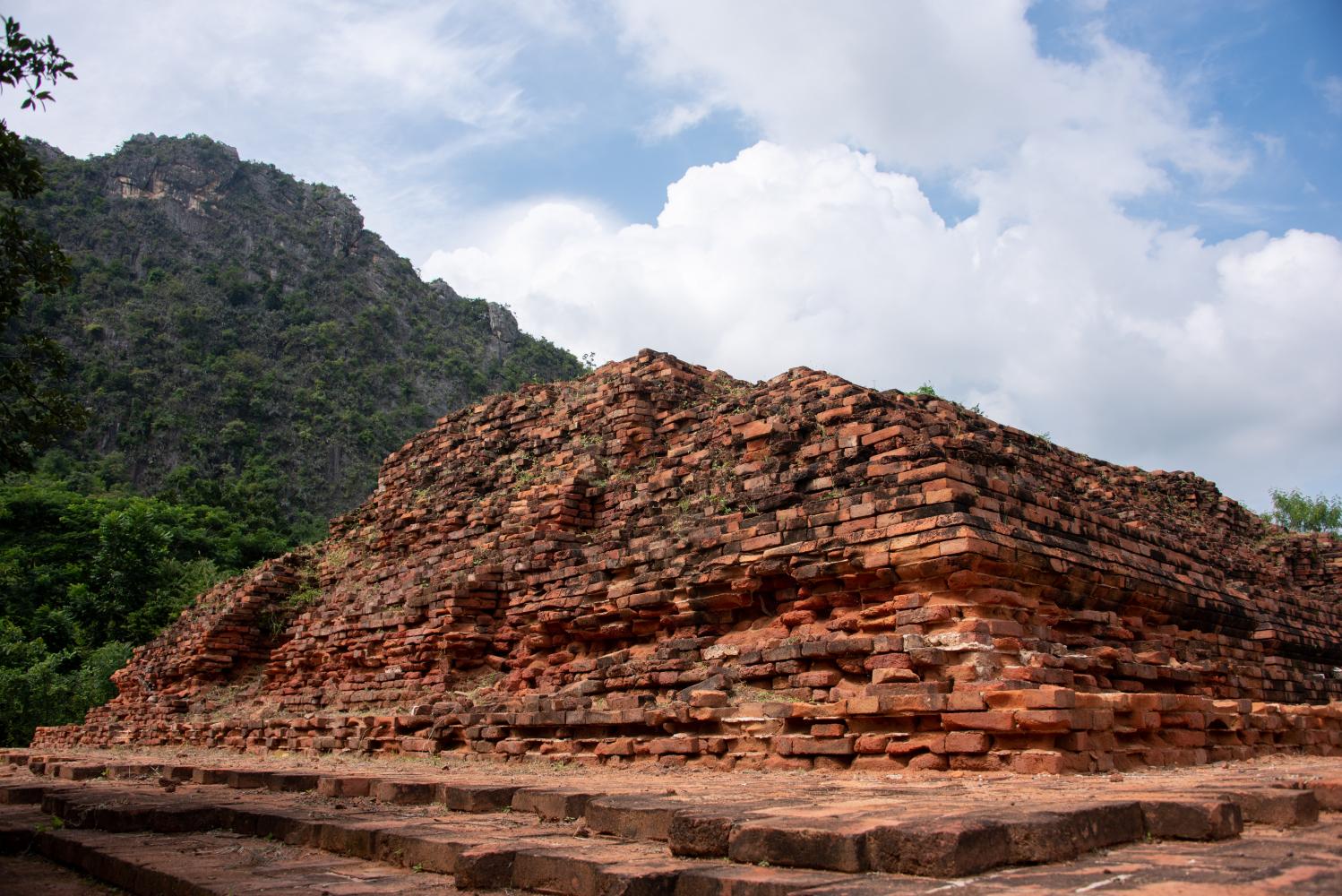
Thung Setthi Historical Site is home to a ruined brick stupa, which was erected during the Dvaravati period.

Four ruined historical buildings at Wat Kamphaeng Laeng are reminiscent of Bayon-style architectural art.

Four ruined historical buildings at Wat Kamphaeng Laeng are reminiscent of Bayon-style architectural art.

The Khao Nang Phanthurat Forest Park has a 2.5km hiking route that runs through the heart of the limestone hill.

Phra Sang's gold well.
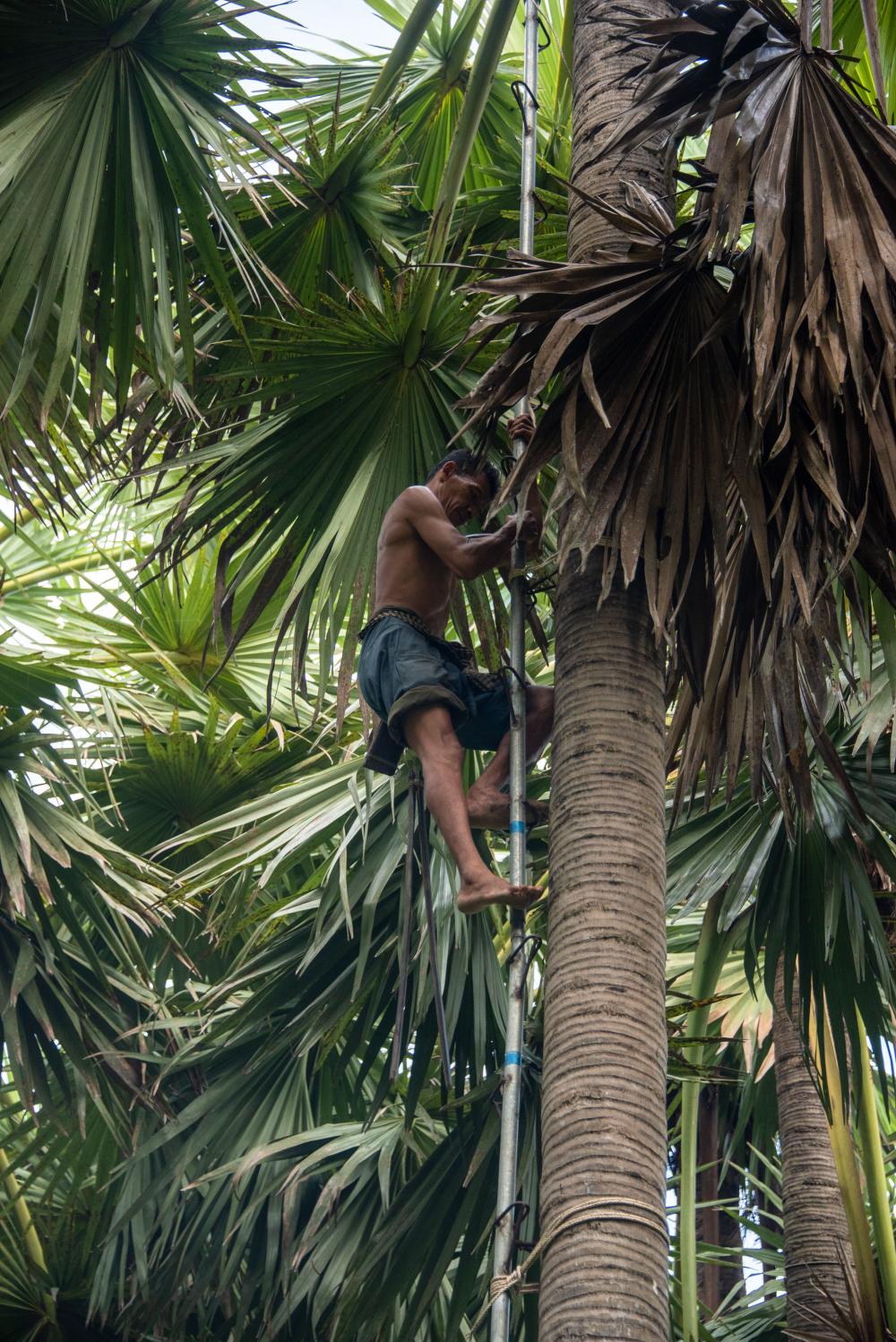
Amnat Phungoen.

The viewpoint overlooks Khok Chang.

